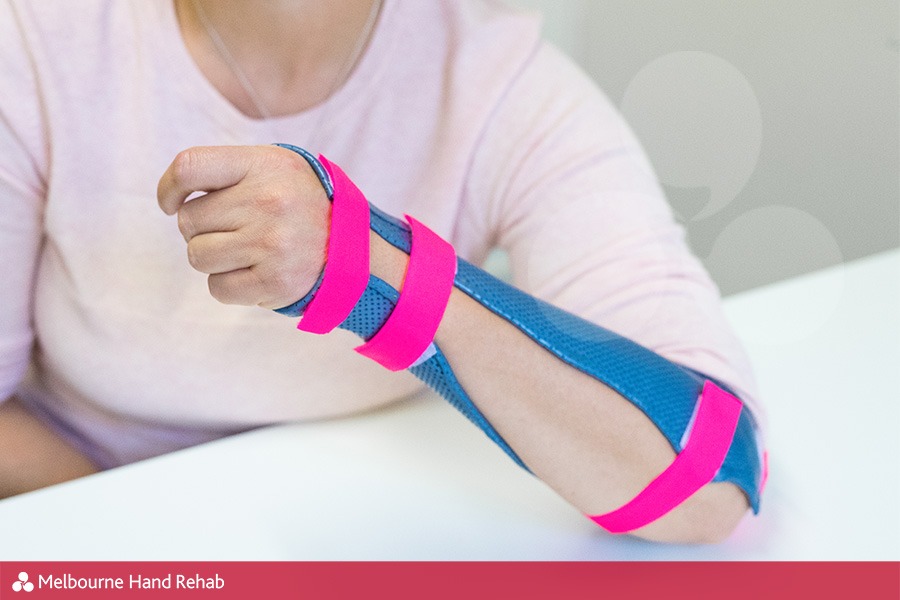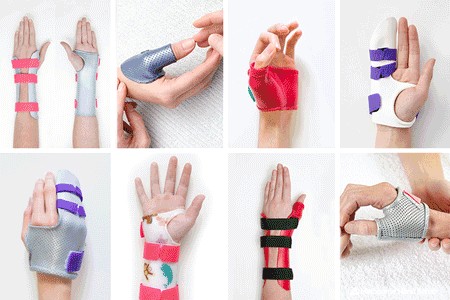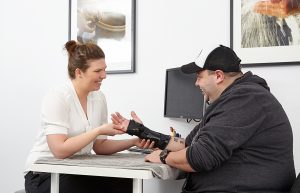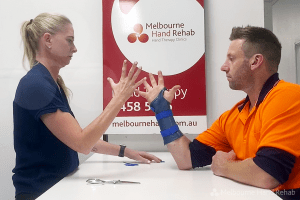
24 Feb Can I drive with a splint or brace on?
This is a common question we hear from people at Melbourne Hand Rehab when we fabricate or provide them with a splint. Unfortunately, there is no clear answer. However, there are many things to consider which can help you make your decision.
What does the law say?
There are no actual laws in Victoria (or even Australia) that forbid driving with a splint on. Despite this, a police officer who has pulled you over may consider you as not being in control of your vehicle, and could fine you on that basis. You are legally required to report to VicRoads if your driving circumstances change due to long-term injury or illness that may affect your driving ability, however short-term changes in driving ability do not need to be reported. Given that most hand conditions require splinting within just the first 4-8 weeks, this would not qualify as chronic.
Given the significant risks involved, it is important to consider the following factors: your splint type, your driving capacity, your insurance, your vehicle, and your confidence.

Your splint:
Your splint could be as little as a paperclip and just immobilise one of your finger joints, or it could go right from your hand to above your elbow. The size of the splint and the joints it restricts is a very important consideration.
Finger-based splints such as mallet finger splints and cap splints are generally considered safe to drive with. Wrist splints, and wrist-and-thumb splints, are much more cumbersome and may not be safe to drive with. In addition, material of the splint is also important to note. Neoprene splints with no metal supports allow much more function than rigid thermoplastic splints do.

Your capacity:
We generally recommend that you meet 3 criteria to be safe to drive:
- grip strength of at least 10 kilograms
- wrist extension range of at least 30 degrees
- ability to make a full fist
These are all important functional requirements for driving.
In addition, you have to consider if your splint obstructs you from doing important functional tasks for driving. Can you fully and smoothly turn the steering wheel? If driving a manual car, can you change gears? Can you use the indicators? If you can’t, you’re not in safe control of your car and shouldn’t drive.

Your insurance:
Some insurance companies won’t cover you if you happen to be involved in an accident and were wearing a splint at the time. Check the product disclosure statement (PDS) of your insurance policy to be sure. As a general rule of thumb, insurance companies also won’t cover you if you drive against the recommendations of your doctor or surgeon (if you’ve recently had surgery).
Your vehicle:
What sort of vehicle do you drive? Is it a motorbike, car, or something else? Are you hoping to return to driving your regular vehicle, or returning to driving for your role as a bus or truck driver? It is important to note that those who are professional drivers (eg: bus or truck drivers) are held to higher medical standards to ensure the safety of themselves and others. In addition, the added demands of driving a manual compared to an automatic car for those with a left hand splint must be noted.

Your confidence:
At the end of the day, if you are not confident to drive with your splint then it is probably best you don’t drive. Wearing a wrist or hand splint may increase your chance of having an accident on the road, and the safest option is to avoid driving with a splint on.
If you are unsure, you can always ask your treating hand therapist, GP, or surgeon about driving with a splint on. If advised by your treating hand therapist and if appropriate for your specific hand condition, it may be safer to remove the splint and drive without it.
Holly Johnson
If you are experiencing finger, hand or wrist pain, don’t hesitate to get in touch. We’d love to help you.
BOOK AN APPOINTMENT
For more information, call us directly on 03 9458 5166


